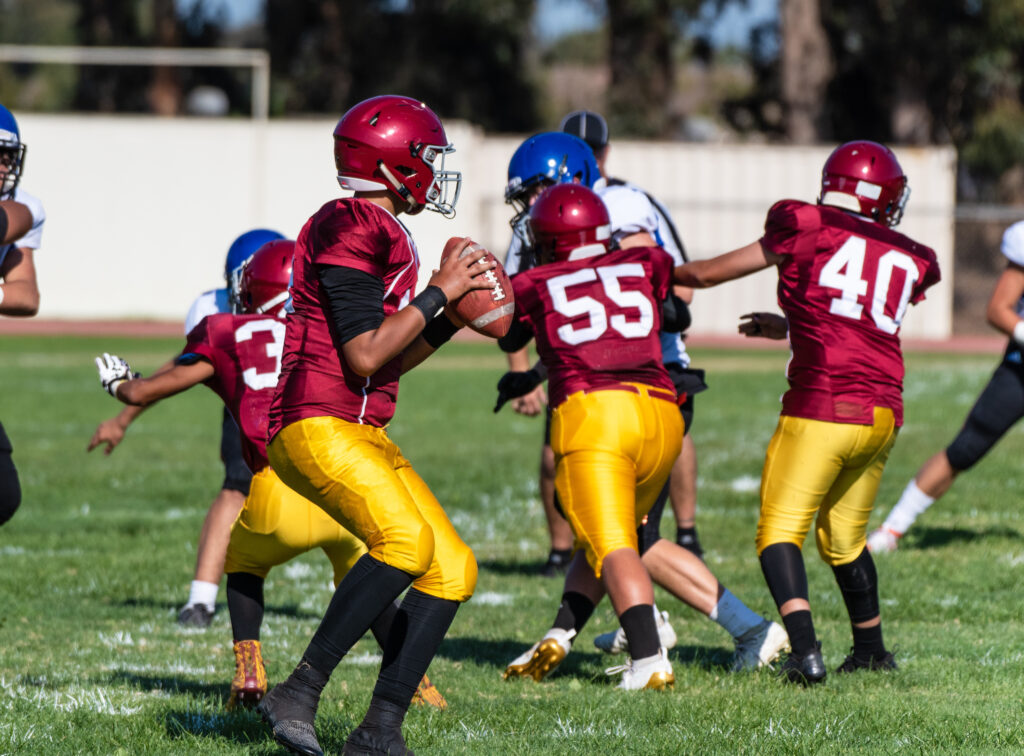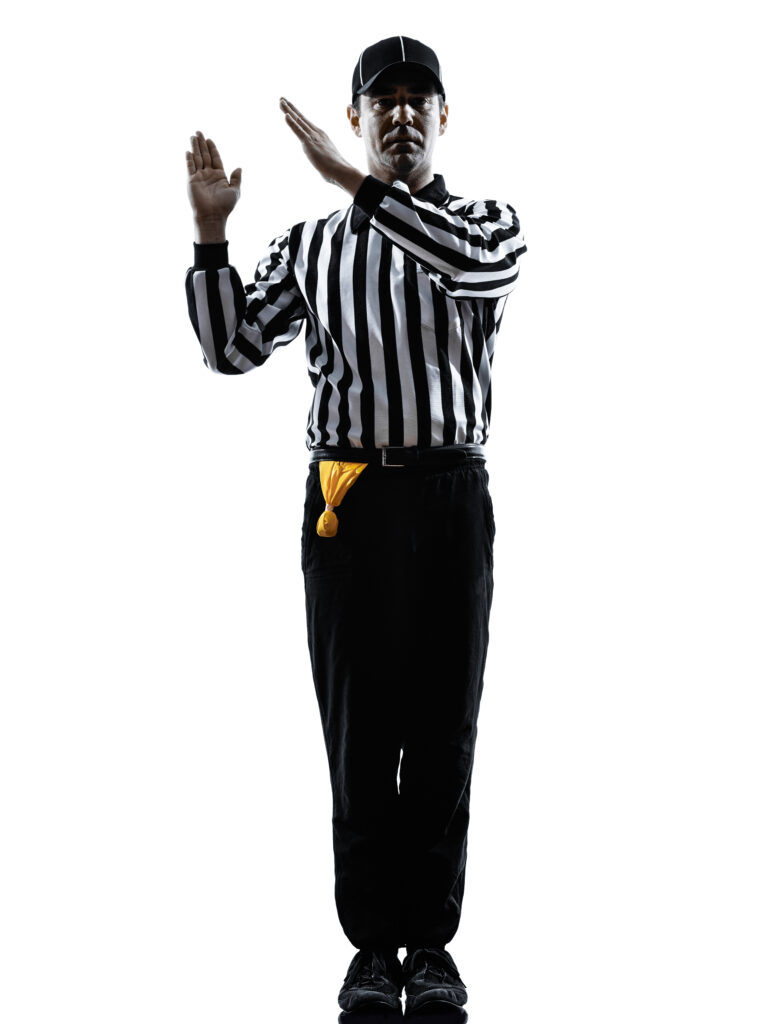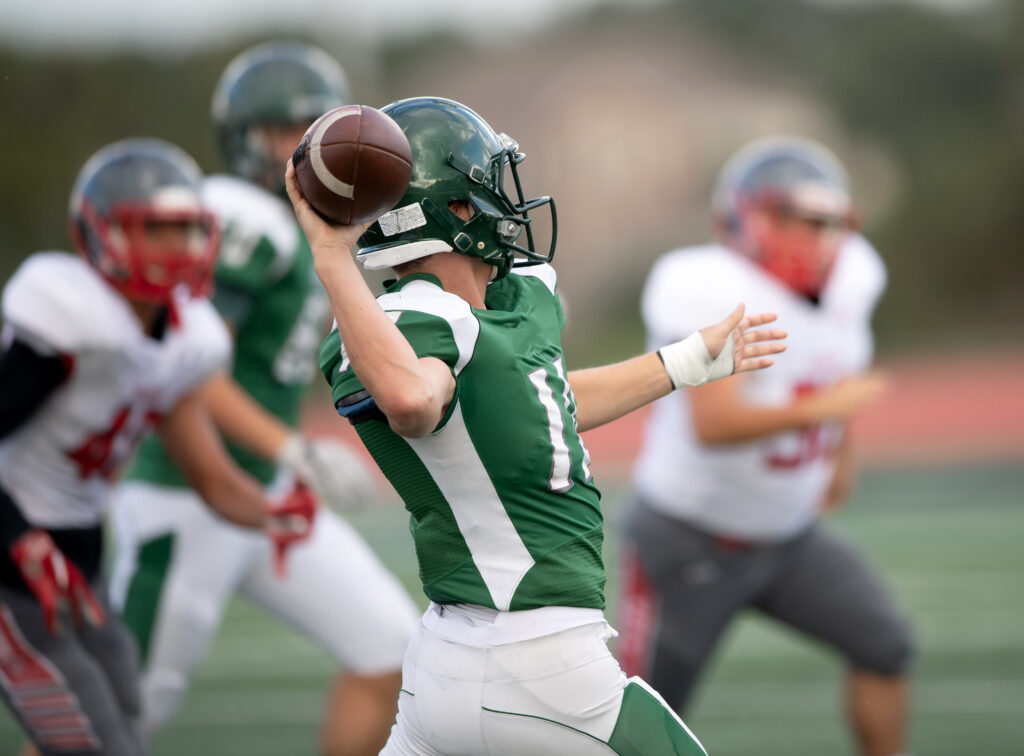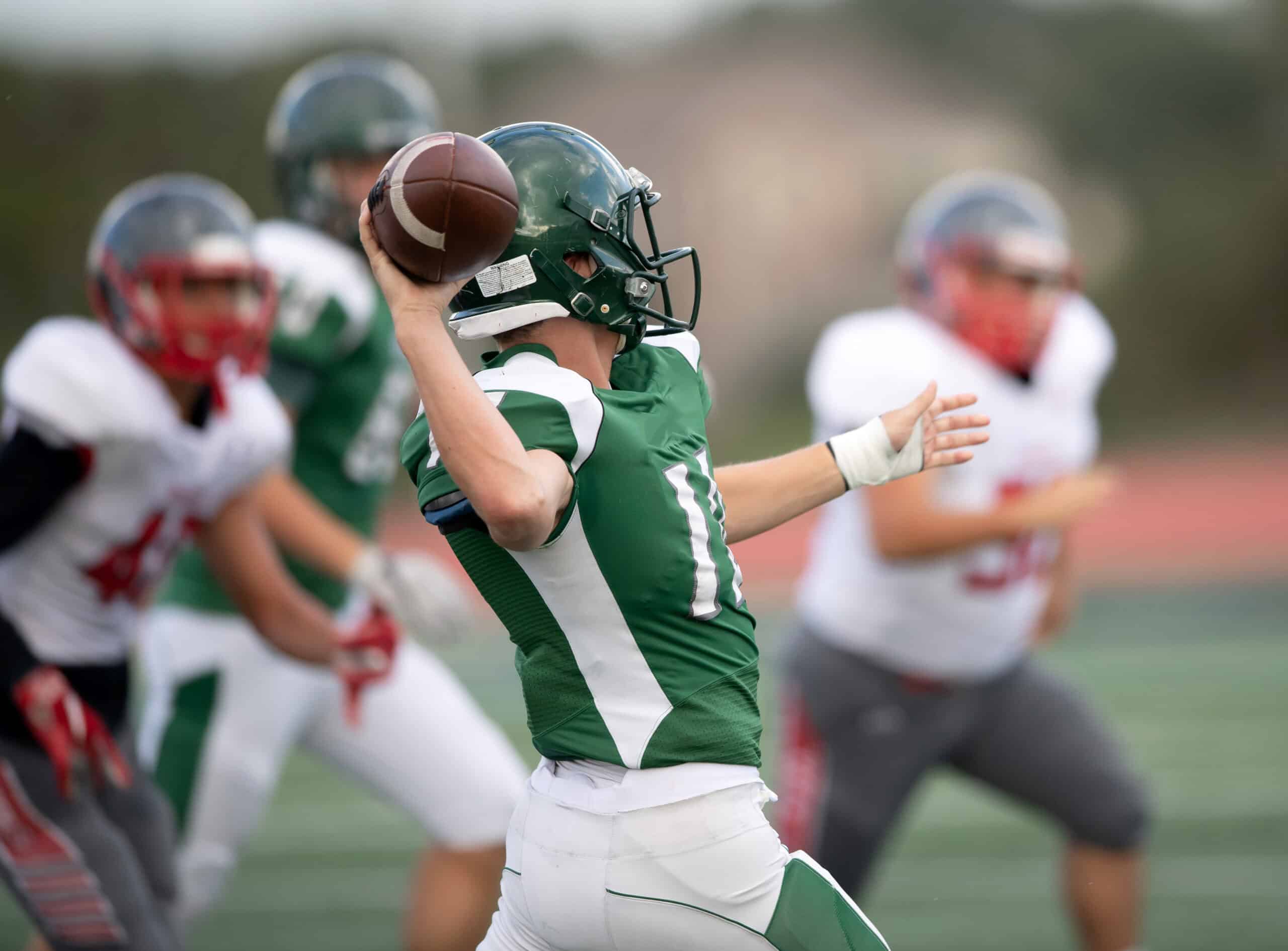This post ‘What is the Pocket in Football’ contains affiliate links, which means we may receive a small commission at no additional cost to you, if you decide to make a purchase through one of those affiliate links
Understanding the Pocket in Football: Key Roles, Concepts, and Strategies
Table of Contents
- 1 Understanding the Pocket in Football: Key Roles, Concepts, and Strategies
- 2 What is the Pocket in Football?
- 3 The Role of Offensive Linemen
- 4 Understanding the Tackle Box and Offensive Tackles
- 5 What is the Pocket in Football: Pocket Presence and Awareness
- 6 The Role of the Tight End, Fullback, and Wide Receivers
- 7 The Threat of Intentional Grounding
- 8 Common Defensive Strategies to Collapse the Pocket
- 9 Realistic Scenarios and Game Situations
- 10 Conclusion
What is the Pocket in Football?
With football season here, we’re going to be hearing a lot of terms and football lingo that maybe we don’t quite understand yet. Like, for example, “what is the pocket in football?” There will be others too, so have a look in our Education & Resources Section for all things we need to know to love football. In American football, the pocket is an essential aspect of the game, particularly for the offense. It serves as the protected area where the quarterback (QB) operates during a passing play.
The effectiveness of the pocket often determines the success of an offensive drive, as it directly influences the QB’s ability to make accurate throws and avoid defensive pressure. In this blog post, we’ll break down what the pocket is, the role of various players in maintaining it, and why mastering pocket awareness is crucial for both amateur and professional players.

What is the Pocket in Football?
The pocket is a defined area formed by the offensive line (OL) to shield the quarterback from defensive players. It is created during passing plays as the offensive linemen, including offensive tackles, guards, and the center, position themselves to fend off incoming pass rushers. The pocket is usually shaped like a U or semicircle and gives the quarterback a secure space to scan the field, make decisions, and deliver a forward pass.
The Role of Offensive Linemen
When asking what is the pocket in football, it’s essential to understand the pivotal role of the offensive line. The pocket is formed by the center, guards, and tackles, who are responsible for blocking and protecting the quarterback from defensive players attempting to breach the line of scrimmage. Offensive tackles, stationed on the outer edges, have the critical task of defending against edge rushers, particularly defensive ends who aim to collapse the pocket from the outside.
You can’t fully grasp what the pocket is in football without recognizing the coordinated efforts of the offensive linemen. These players work in unison to maintain the integrity of the pocket, ensuring it remains stable long enough for the quarterback to execute the play. The success of a passing play often hinges on their blocking techniques, such as the three-point stance and proper hand placement, which are crucial in keeping the pocket intact.
Understanding the Tackle Box and Offensive Tackles
The tackle box is the area extending laterally between the two offensive tackles and vertically from the line of scrimmage to a depth of 10-12 yards. The quarterback typically operates within this tackle box during passing plays, relying on the offensive tackles to keep edge rushers at bay. When an offensive tackle holds strong at the edge, it prevents the defensive player from collapsing the pocket too quickly, giving the quarterback more time.
What is the Pocket in Football: Pocket Presence and Awareness
One of the defining traits of a great quarterback is their pocket presence and awareness. Pocket presence refers to the quarterback’s ability to feel pressure from pass rushers without taking their eyes off their receivers. Pocket awareness involves subtle movements within the pocket to buy extra time for a pass. Whether it’s stepping up to avoid an edge rush or sliding laterally to escape a collapsing pocket, these movements help the QB stay in rhythm and deliver accurate throws.
QBs with exceptional pocket awareness, such as Tom Brady or Joe Montana, excel at making quick reads, avoiding sacks, and finding open receivers even under duress. Drills that improve footwork, escape routes, and reaction times are critical in developing this skill. We’d be remiss if we didn’t put Patrick Mahomes in this section also.
The Role of the Tight End, Fullback, and Wide Receivers
While offensive linemen play the primary role in forming the pocket, the tight end and fullback often provide additional blocking support, especially against aggressive pass rushers. The tight end, positioned at the end of the line of scrimmage, might stay back to block or chip a defender before running a route. The fullback, on the other hand, may pick up blitzing linebackers or help reinforce the edge. And I mean really, I’m going to seize the opportunity to mention Travis Kelce in a blog post, even if it just to answer the question what is the pocket in football. You can’t blame a girl for tryin’.
Wide receivers, although mainly focused on getting open for passes, play a role in timing and pocket dynamics. A receiver’s ability to create separation and quickly find open areas can determine whether the quarterback needs to extend the play or release the ball immediately.

The Threat of Intentional Grounding
One critical rule related to the pocket is intentional grounding. If a quarterback throws the ball away to avoid a sack while still in the pocket, without a nearby eligible receiver, they risk being penalized for intentional grounding. This penalty results in a loss of down and a significant yardage loss from the previous spot, making it a crucial aspect of pocket management. However, once the quarterback moves outside the tackle box, they can throw the ball away as long as it crosses the line of scrimmage.
Common Defensive Strategies to Collapse the Pocket
Defensive teams deploy various strategies to break down the pocket and pressure the quarterback. These include:
- Pass Rushers and Blitzes: Defensive ends and outside linebackers are the primary edge rushers. They often use speed and agility to get around offensive tackles. Blitzes involve additional rushers, like middle linebackers or defensive backs, aiming to overwhelm the offensive line.
- Stunts and Twists: These are strategic moves where defensive linemen switch positions after the snap to confuse the offensive line, creating gaps and lanes for a direct path to the quarterback.
- Bull Rush: This technique involves a defensive player driving straight into an offensive lineman to push them back into the quarterback’s space, collapsing the pocket from the front.
Realistic Scenarios and Game Situations
Imagine a situation where a quarterback drops back in the pocket during a two-minute drill. The offensive line forms a U-shaped wall of protection, giving the QB enough time to scan the field. However, as the pocket starts to collapse due to a defensive lineman’s inside move, the quarterback slides to the right, resets his feet, and finds an open receiver for a big play.
This scenario highlights the importance of pocket presence, the role of the offensive line, and the awareness needed to make successful throws under pressure.

Conclusion
The pocket is the nerve center of a passing play, and its success hinges on the collaboration of the offensive line, tight ends, and quarterback. Understanding how the pocket functions—from the roles of offensive tackles to the quarterback’s movements—can provide valuable insight into why certain plays succeed or fail. Whether you’re a player looking to improve your game, a coach developing strategies, or a fan analyzing the sport, mastering the dynamics of the pocket offers a deeper appreciation for one of football’s most critical aspects. Check out the NFL Shop for your favourite teams fan gear



